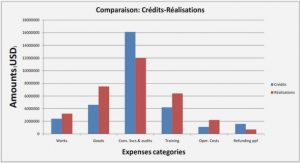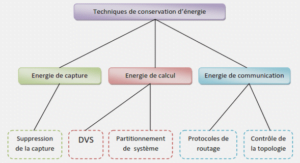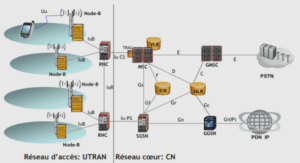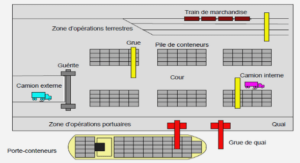One of the main contributions of this study is the introduction of the ETM-CT to the EA community. This model can certainly help the design or redesign of sustainable organizations by providing concepts fostering adaptive strategies of organizations in relation to their environments. Hence, the objective of this literature review is to outline state of the art of EA approaches that have tackled the issue of integrating the relationship between an organization and its environment. To our knowledge, there is no such study in the literature. We focused primarily on determining if a complete model of an organization’s adaptation to its environment (as is the case with the ETM-CT) is used by EA approaches.
In this subchapter, we analyze the key studies we found in the literature on EA related to the topic of system-in-environment. While literature reviews on EA exist, they do not have the same focus as our study. We used these reviews to derive insights on the relationship between an organization and its environment and on the use of the ETM-CT. We enriched our analysis by discussing references of EA promoting organizations’ interaction with their environment. We concluded that even if some EA approaches use some principles of adaptation of the organization to its environment, current EA frameworks do not rely on a complete model that integrates adaptation of the organization to its environment.
As shown in the results of the literature review on EA conducted by Tamm et al. (2011), EA is positioned between IT and business strategy formulation, on the one hand, and projectfocused solution architecting on the other. Drawing on the findings of the literature review, the paper proposes the Enterprise Architecture Benefits Model (EABM), in which EA leads to organizational benefits through its impact on four key benefit enablers: organizational alignment, information availability, resource portfolio optimisation and resource complementarity. The study of contextual (internal or environmental) factors led Tamm et al. to suggest that under some circumstances some (large and more complex) organizations are better positioned to benefit from EA investment. Also, EA can improve an organization’s flexibility and change capability. However, the authors suggested further investigation of contextual factors and encouraged the improvement of the EABM model, as there was no theoretical basis to guarantee the completeness of the model. Hence, the study encourages the investigation of the internal inter-relations of an organization and its interrelations with its environment. It also shows the need to use a complete model that is developed on a theoretical basis. This is the case of the ETM-CT, as we show in this report.
After a review of the key literature on EA, Lapalme (2012) highlighted the emergence of three schools of thoughts in regards to aligning scope and purpose of EA; each school of thought has a unique belief system consisting of definitions, concerns, assumptions, insights and limitations. According to the author, these schools of thoughts represent ideals around which EA approaches gravitate. They are:
• Enterprise IT Architecting: EA is centered on aligning information technologies with an organization’s strategies. The objective is to effectively enable the business strategy by using the proper and optimized IT capabilities;
• Enterprise Integrating: EA aims to ensure an organization’s consistency (coherence between its parts) by designing all its facets and effectively implementing its strategy;
• Enterprise Ecological Adaptation: EA is focused on representing the organization in its environment. It enhances the organizational innovation, coherency and sustainability, and it promotes ecological learning.
It appears that the Enterprise Ecological Adaptation school of thought is most appropriate in regards to helping the organization to assess and improve its adaptive capacities to the environment and to represent all internal and external inter-relations. In opposition, the Enterprise Integrating school of thought only manages its environment. Note that these two schools of thought adopt holistic visions leading to outcomes representing all the enterprise aspects (facets) and jointly optimizing the social and the technical systems. Lapalme (2012) listed some references on EA approaches classified in the Enterprise Ecological Adaptation school of thought. Although the author tackled the system-in-environment co-evolution between the schools of thoughts, which were compared in part to the management of the internal and environmental interrelations of organizations, the author did not investigate the ETM-CT, which integrates all the principles listed in the paper.
According to Simon et al. (2013), the evaluation of well-known frameworks by Leist and Zellner (2006) suggested that, in general, there are several areas for methodological improvement; Langenberg and Wegmann (2004) concluded that the framework of Zachman (1987) was, at the point of publication of their article, the most referenced framework, after which Buckl et al. (2009) concluded that “The Open Group Architecture Framework (TOGAF) has become the most prominent approach in practice,” (in Simon et al., 2013, p. 4) showing the dominance of the Enterprise IT Architecting vision. Schmidt and Buxmann (2011) found that stakeholders’ participation and communication were considered of less importance than architecture governance for the success of EA management. All these studies demonstrate that EA approaches do not lead to the design of sustainable organizations, as the organizations cannot adapt to their environment. Indeed, these approaches do not take into account all the internal interrelations of an organization or integrate the relationship between an organization and its environment. These interrelations, which are demonstrated by the ETM-CT, are reported in our report as being among the conditions necessary to ensure an organization’s sustainability. Note that the development of the model was based on strong theoretical ground resulting from the contributions of scientists from different fields. This analysis of previous literature reviews cited by Simon et al. (2013) exploring EA research through the study of academics’ and practitioners’ publications showed that there is a gap between theoretical foundations and practical issues in EA research and that research has been more concerned with the business organization than with the business strategy and model.
According to Wegmann (2003), the purpose of EA is to align more effectively enterprises’ strategies with their processes and resources (business and IT). Wegmann argued that “Business and information technology (IT) integration is essential for enterprises to achieve their competitiveness” (p. 1) and defined an enterprise model as a representation of “the resources found in the enterprise and in its environment, together with the processes in which they participate” (p. 2). The author discussed the importance of the concept of a systemic paradigm in system sciences to provide necessary theoretical foundations to EA. The author argued that his systemic paradigm would improve enterprise architects’ understanding of the existing methodologies, therefore improving their capacity to explain the practical problems they face. The author presented the Systemic Enterprise Architecture Methodology (SEAM), which is an application of his systemic paradigm. This methodology can be supported by a tool. The author highlighted the need for a shift in paradigm and promoted some principles present in the ETM-CT but emphasized that these principles are not sufficient in regards to adaptive strategy of decision making defined by ETM-CT.
Lapalme and de Guerre (2014a) developed a framework about complexity and its management. They then discussed the EA schools of thought proposed by Lapalme (2012) related to their associated perspectives on complexity management. They proposed a design perspective of EA to offer a comprehensive approach to manage complexity resulting from working towards organizational sustainability. Hence the authors presented the key guidelines, assumptions, implications, and limitations of this perspective grounded in open socio-technical system theory (OST), which was developed essentially from the ETM-CT. Note that OST is a specific theory promoting system-in-environment co-evolution and joint optimization of its interrelated social component (people, culture, norms, interactions, roles, etc.) and technical component (technology, tools, materials, etc.). Emery and Trist (Trist, 1981) proposed the socio-technical systems theory, which includes the ETM-CT. Indeed, Babüroǧlu (1992), in reviewing the Emery-Trist Systems Paradigm (ETSP), showed that ETSP developed in four tracks, the last three of which concerned the ETM-CT . Note that the version of OST used by the authors in this paper used some concepts developed by F. Emery about which there exist divergences between contributing authors to the ETM-CT. . The authors transformed the main principles promoted by that theory into principles to integrate into an EA approach. Finally, Lapalme and de Guerre (2014a) provided a comparison between their perspective and typical EA methodologies.
Rabaey (2014, p. 99) defined complex systems as systems that “interact with an environment where a high degree of uncertainty exists.” The author referred to complex adaptive systems as dynamic systems that have to adapt their goals, means and structure in order to survive in an unstable environment as it evolves rapidly. For this purpose, the author proposed a concept of EA, named Complex Adaptive Systems Thinking – Enterprise Architecture (CAST-EA). This concept is based on the Cynefin framework, which makes the organization and/or its parts aware of their possible contexts and where “The context defines the unique environment in which the system is situated (Gharajedaghi, 2011) which requires permanent observing and intelligence (Rabaey et al., 2012)” (in Rabaey 2014, p. 103). The author discussed types of contexts and the adaptation of organizations to them. The CAST EA concept aimed to avoid the damage for the organization that may be caused by Cynefin dynamics if the organization is not aware of the shift from one context to another. This concept supports an agile organization. Rabaey (2014) showed that the concept of intelligence increases and assesses existing knowledge, and supports decision making by reducing uncertainty. CAST-EA promotes a holistic vision of the organization, which is considered as an open system. We noted that the author promoted some principles and concepts present in the ETM-CT independent of the model. However, in the ETM-CT, humanity has shifted between environments through its history. It is now experiencing a turbulent environment and the objective of the adaptation strategy of the ETM-CT is to transform the environment of an organization into a more stable one with less uncertainty, inter-relations and complexity.
Villarreal (2014) presented an analytical framework that aims to integrate the many elements of sustainable development and their interrelationships and that fosters a systemic perspective. The objective was to highlight the advantages of the EA approach to improve sustainable development. The author believed that presenting a systemic description of sustainable development would attract and facilitate contributions from practitioners of EA. The author integrated only some principles of adaptation to ensure sustainability. The proposed framework does not rely on a complete model, such as the ETM-CT.
|
Table des matières
INTRODUCTION
CHAPTER 1 LITERATURE REVIEW
1.1 Literature review on enterprise architecture
1.2 Literature review on reviews on the ETM-CT
CHAPTER 2 LITERATURE REVIEW METHODOLOGY
2.1 Comparison between literature review types
2.2 Purpose and research questions
2.3 Search process
2.4 Selection process
2.5 Challenges concerning the gathering of relevant studies
2.6 Data extraction (collection)
2.7 Synthesis of studies (data analysis)
CHAPTER 3 BACKGROUND
3.1 Origin of causal texture
3.2 Open system and its components
3.3 System-in-environment co-evolution and directive correlation
3.4 Types of causal textures
3.5 Ideals
3.6 Maladaptive strategies
3.7 Parameters of choice behaviour
3.8 Design principles
3.9 Inter-organizational domain and the referent organization
CHAPTER 4 RESULTS
4.1 Authors who contributed the most to the ETM-CT
4.2 Authors’ contributions to the ETM-CT
CHAPTER 5 DISCUSSION
5.1 Convergences between authors
5.2 Divergences between authors
CHAPTER 6 LIMITATIONS OF THE LITERATURE REVIEW
CHAPTER 7 IMPLICATIONS OF THE ETM-CT ON ENTERPRISE
ARCHITECTURE RESEARCH
CHAPTER 8 FUTURE WORK
CONCLUSION
![]() Télécharger le rapport complet
Télécharger le rapport complet






